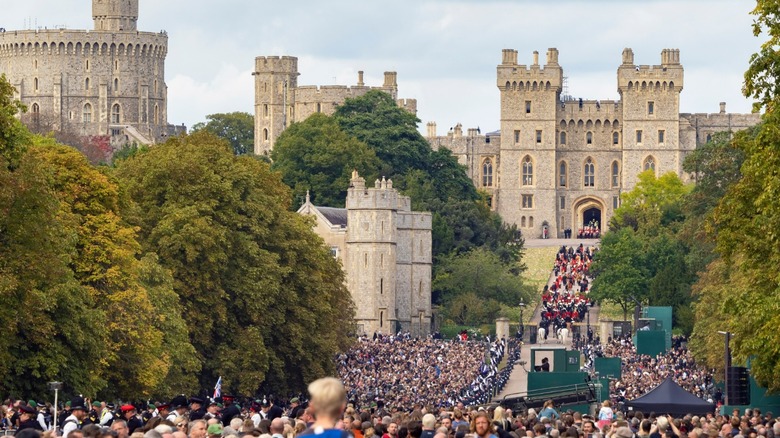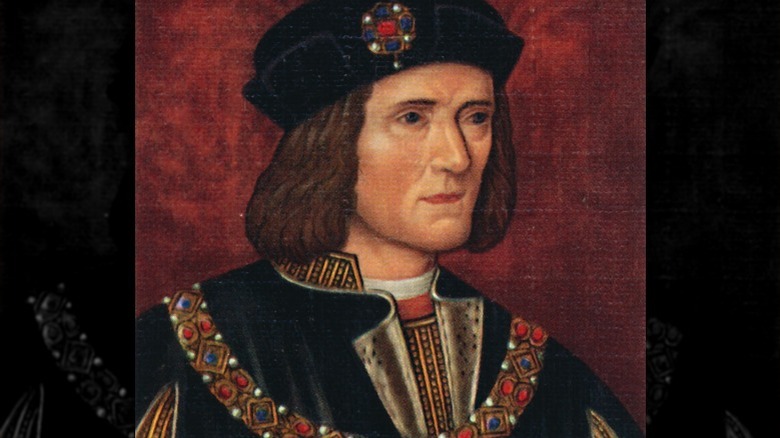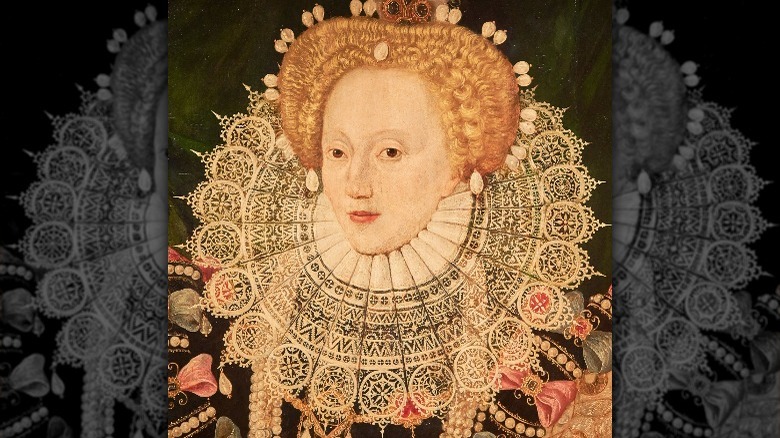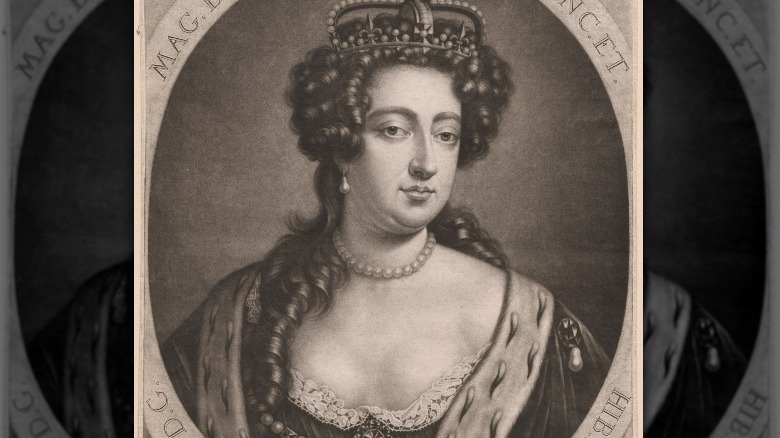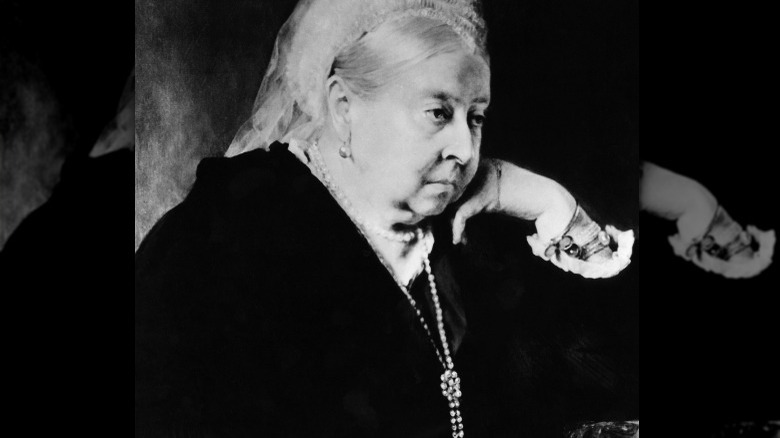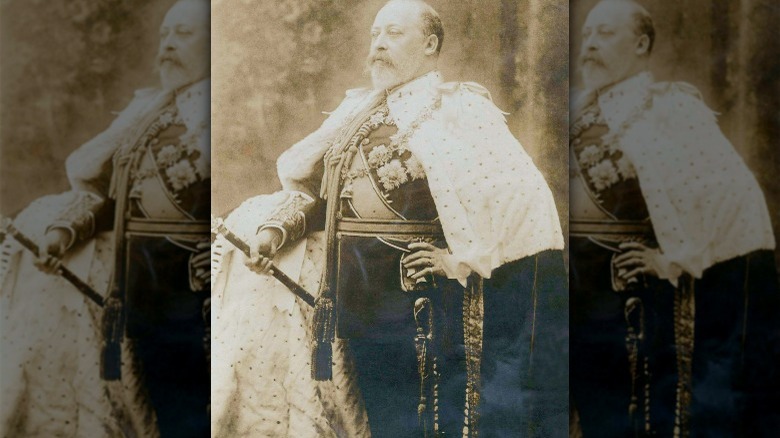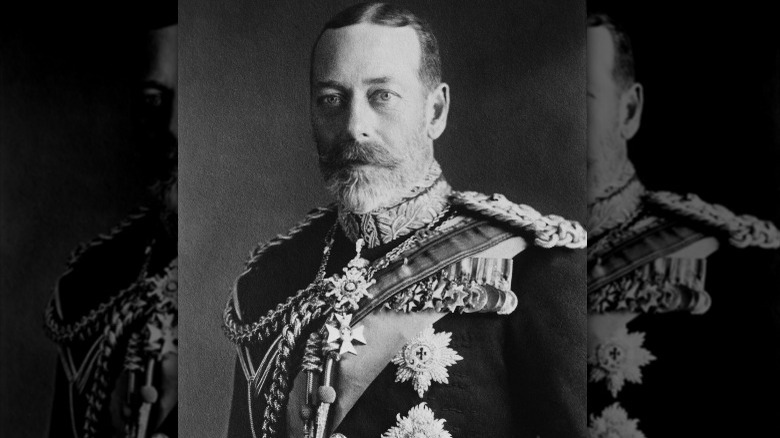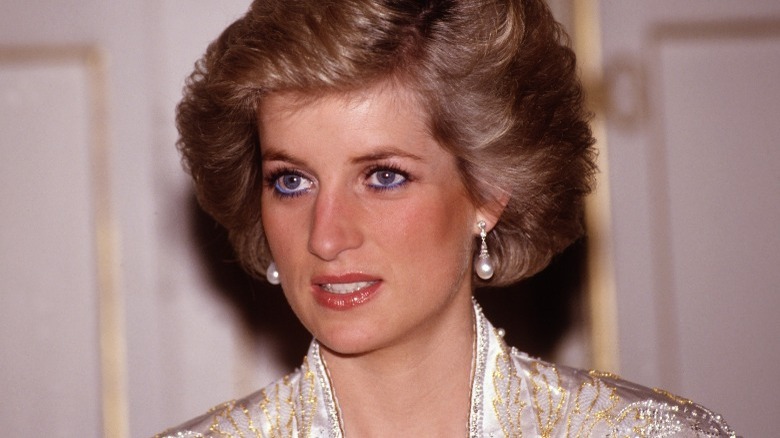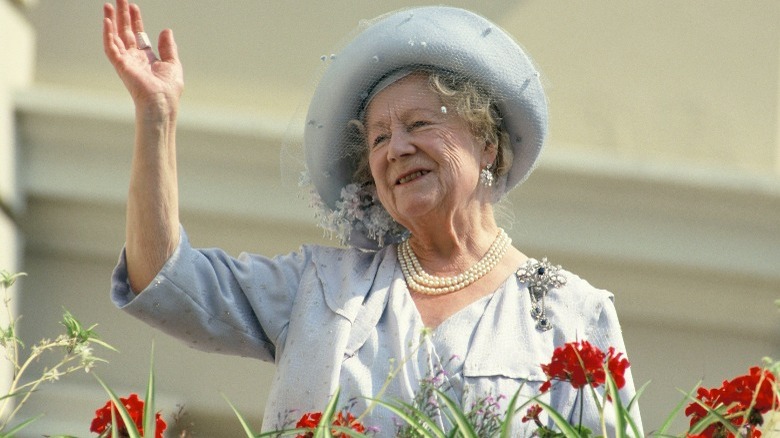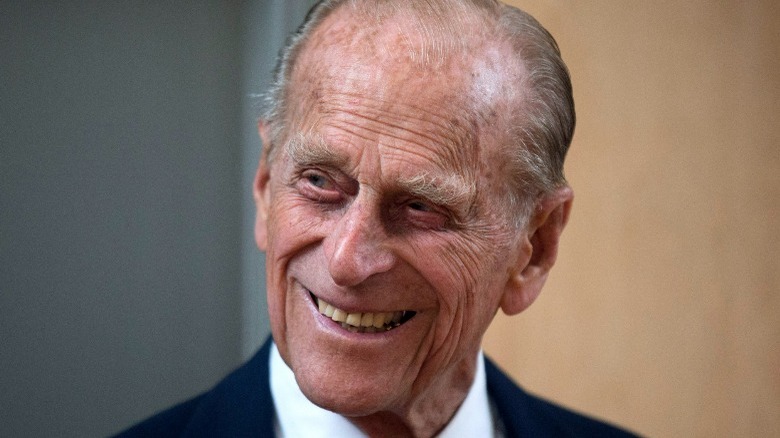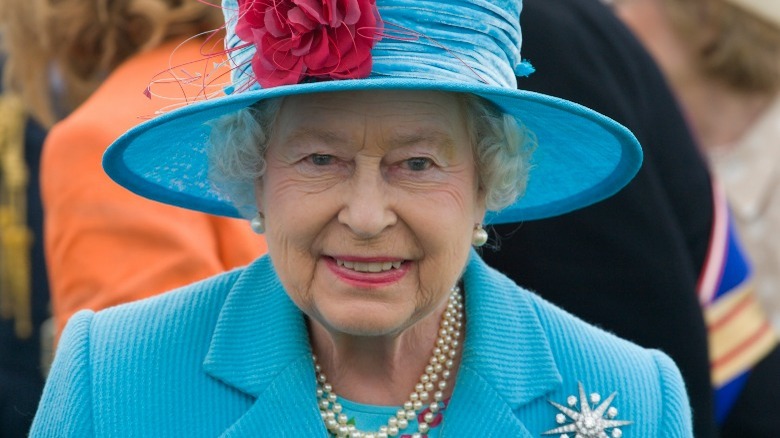The Most Expensive Royal Funerals
On September 19, 2022, Queen Elizabeth II's funeral marked Britain's first state funeral since Sir Winston Churchill's in 1965 and the first one for a royal since her father's, King George VI, in 1952. Typically, state funerals are reserved for the monarch and are publicly funded. They can also be held for non-royals of national importance if approved by the monarch and Parliament, who vote to be able to use public funds for the funeral. Other members of the royal family are usually given ceremonial funerals, which can still be primarily covered by public money as long as Parliament approves (per The Telegraph).
As of this writing, the queen's funeral costs have not yet been disclosed, but it has re-sparked the debate over the use of British tax money by the royal family. On one hand, the obviously large expense comes at a time when Britain has seen inflation nearly at 10% and the highest consumer prices in the past 40 years (per The New York Times). On the other hand, King's College London professor Anand Menon says the British public is "very good at living with that contradiction" as "the funeral is the funeral and it's [the queen] ... and also because it gives us the opportunity to host the biggest diplomatic jamboree ever."
So how do the projected costs for Queen Elizabeth's funeral compare to other British royalty of the past? Whose funeral was the most expensive? Here's a chronological look at the most expensive royal funerals.
King Richard III wasn't properly laid to rest until more than five centuries later
King Richard III is the anomaly on this list as he died in 1485, but his remains were only discovered again in 2012 in a car park in the city of Leicester (per BBC News). They were finally reburied in March of 2015, with the final costs amounting to more than 3 million pounds (3.7 million pounds when adjusted for inflation, which is about $4 million). Of that amount, 2.5 million pounds (about 3 million pounds or $2.7 million) was used to remodel the Leicester Cathedral, while the rest was for events and crowd security. The money was raised through a combination of the cathedral's fundraising and funding from the University of Leicester, city and county councils, and the local police.
At the time of the reburial, Leicester City Mayor Sir Peter Soulsby told the BBC that "the discovery of King Richard lll and his subsequent reinterment has had a greater impact on the city than we could ever have anticipated." It is estimated that over 600,000 people visited the region to see and participate in the reburial events and spent over 54.5 million pounds (about 67.1 million pounds, which is equal to about $72.9 million when adjusted for inflation) at the local businesses.
Queen Elizabeth I's funeral set a precedent for the royals that came after her
When Queen Elizabeth I died in 1603, her successor King James I spent over 11,000 pounds for her funeral, which is approximately 2.7 million pounds ($2.9 million) when adjusted for inflation (per The Tudor Society). She died on March 24 and her coffin lay in state at Whitehall until it was carried to Westminster Abbey for her funeral on April 28. The coffin was covered in purple velvet and topped with her wooden effigy, which wore her crown and held her scepter. Six knights supported a canopy above the coffin, and it was pulled by horses that were draped in black.
King James I spent 1,485 pounds (approximately 366,000 pounds or $397,000 when adjusted for inflation) to have a large, marble monument built in the likeness of the queen in her older age. Her coffin and the monument were originally in the vault of her grandfather, King Henry VII, until they were moved in 1606 to a vault shared with her half-sister, Mary I (per Westminster Abbey).
Queen Mary II had the most expensive royal funeral in history
When Queen Mary II died of smallpox on December 28, 1694, her funeral followed the pattern of Elizabeth I's service, with the lying in state, public procession, and final resting place in King Henry VII's chapel in Westminster Abbey. However, the price tag was more than four times the amount at 50,000 pounds, which is an astronomical 12 million pounds ($13.4 million) when adjusted for inflation (per Westminster Abbey).
According to historian Michael Schaich's "Monarchy and Religion: The Transformation of Royal Culture in Eighteenth-Century Europe," the lavish funeral was "to bolster the rule of her unpopular Dutch husband," William III, with whom she had co-ruled. Schaich further notes that the 1695 "procession was one of the largest ever to be seen at a royal funeral. It also proved to be the most costly royal burial to date."
One of the expenses was Queen Mary's wax effigy, which was used for the lying in state, but was not placed on top of the coffin during the public procession. In another departure from the time of Queen Elizabeth I, money was not spent to build a memorial to place on top of her grave. According to the Westminster Abbey's official site, it was planned but probably nixed, as there was no room left in Henry VII's chapel.
Queen Victoria's service became the blueprint for the modern royal funeral
Queen Victoria died in 1901, and according to The New York Times, her funeral cost 35,500 pounds (the equivalent to about 4.9 million pounds or $5.2 million when adjusted for inflation). As the queen had reigned for nearly 64 years and left few instructions for the service, hers is remembered in history as being a bit chaotic, since it had been a while since the last state funeral. Per The Telegraph, a nobleman by the name of Viscount Esher wrote, "I cannot describe to you the historical ignorance of everyone from top to bottom who should know something of procedure ... You would think that the English monarchy had [not] been buried since the time of Alfred [the Great of the ninth century]."
However, what the queen did leave behind is still present in today's state funerals. While previous royal funerals were set at night, she requested hers to be held during the day (per the Daily Mail), and as she was the daughter of an army officer, she asked for a military service. During the procession, the gun carriage carrying Queen Victoria's coffin accidentally became separated from the horses that were pulling it. Prince Philip's grandfather, Prince Louis of Battenberg, came up with the solution to have the naval guard of honor drag the gun carriage the rest of the way, which started a new royal tradition, according to The Telegraph.
King Edward VII's funeral was similar to his mother's in cost and chaos
King Edward VII's funeral was a little more expensive than Queen Victoria's at 40,500 pounds, which is about 5.3 million pounds or $5.8 million when adjusted for inflation (per The New York Times). His 1910 funeral was only nine years after his mother's, but "the king's enormous number of Continental royal relationships" was one of the many reasons it was still disorganized (per The Telegraph). Because of this, the Duke of Norfolk — the Earl Marshall, who organizes state funerals — did not make a seating plan, and "[a]s a result, guests were seated, moved, reseated, moved, and reseated again every time another guest arrived" at St. George's Chapel.
Amid the chaos, there were many notable moments. At the king's request, his beloved dog Caesar, aka Stinky, walked behind the coffin during the procession. According to the Daily Mail, Caesar even walked ahead of the new monarch, King George V, and other foreign leaders including Kaiser Wilhelm II of Germany, who was allegedly quite disgruntled over that fact. In an untraditional move, Edward's wife, Queen Alexandra, also walked directly behind the king's coffin (per The Telegraph).
On the morning of the funeral, Big Ben rang 68 times, one for each year of the king's life, per the House of Commons Library. It was the first time this was done at a royal funeral, and was repeated at the funerals of George V and George VI.
King George V's funeral is the least expensive on this list
King George V's 1936 funeral was less expensive than his grandmother's and father's, costing 25,000 pounds, according to The New York Times. Adjusted for inflation, this is approximately 2 million pounds, or $2.1 million. The breakdown of the costs was as follows: Entertainment and lodging for foreign guests and mourning allowances for servants amounted to 7,000 pounds (550,000 pounds or $600,000); armed services cost 11,260 pounds (885,000 pounds or $960,000); preparations for the lying in state at Westminster Hall, the funeral service at St. George's Chapel, and the procession were 3,000 pounds (235,000 pounds or $255,000); and the rest were miscellaneous expenses.
An interesting tidbit from King George's funeral was that the cross at the top of the Imperial State Crown fell to the ground from the top of the coffin during the procession to his lying in state. His son, Edward VIII, saw this incident as a bad sign, and within a year of his father's death, he abdicated the throne to infamously marry the twice-divorced American socialite, Wallis Simpson.
Princess Diana's funeral was modeled after the Queen Mother's
According to the Los Angeles Times, Princess Diana's 1997 ceremonial funeral cost somewhere between 3 million and 5 million pounds, or between $7 million and $8 million to account for inflation. There were 2,000 guests at Westminster Abbey, including political figures and celebrities, a million people lining the London streets to watch her coffin pass by, and 2.5 billion watching the funeral broadcast — numbers that were comparable to Queen Elizabeth II's funeral.
Because her death was so sudden — and because royal funerals are typically prepared and rehearsed years in advance — Princess Diana's funeral was modeled after Operation Tay Bridge, the codename for the Queen Mother's funeral plan that had been set since 1979 (per Parade). On the day of Diana's funeral, the Queen Mother actually had the surreal experience of seeing what her funeral would be like. The other royal funeral plan codenames were Operation Forth Bridge for Prince Philip, Operation Menai Bridge for Charles (the then-Prince of Wales), and Operation London Bridge for Queen Elizabeth II.
The Queen Mother's funeral was paid for by taxpayers and the queen
The Queen Mother's 2002 funeral was one of the most expensive royal funerals in modern times and is the costliest on this list. Financed by both Queen Elizabeth II and the taxpayers, the funeral cost 5.4 million pounds, which is about 9.7 million pounds or $10.6 million when adjusted for inflation (per the Daily Express).
Security was the largest cost at 4.3 million pounds (8.7 million pounds or $9.4 million) and the lying in state cost 825,000 pounds (1.5 million pounds or $1.6 million), according to a House of Commons report (via The Mirror). Beyond what was paid for by the queen and public funds, the Home Office spent 1,817 pounds (3,300 pounds or $3,500) on mourning stationery, while the Ministry of Defence spent 301,000 pounds (545,000 pounds or $590,000) on the event, according to the Daily Express.
Prince Philip's funeral was drastically scaled down due to the COVID-19 pandemic
The costs for Prince Philip's private ceremonial funeral in 2021 have not been disclosed, but some assumptions can be made when comparing his funeral with the Queen Mother's. First, the prince did not lie in state as per his wishes. Second, he did not have a public procession through the streets of London, which greatly reduced the amount of security that was needed. Third, Queen Elizabeth limited the funeral service in Windsor Castle to just 30 attendees to adhere to COVID-19 social distancing protocols (per the Daily Express).
The Mirror reports that the Queen Mother's funeral utilized 11,887 police staff and 1,306 civil staff. As the bulk of the cost was for security, it can be assumed that Prince Philip's funeral was significantly less expensive due to its much smaller scale, with the Daily Express assuming that at least 1.4 million pounds ($1.5 million) in costs were saved. Even though the scaled-back funeral was done out of necessity due to the pandemic, former palace spokeswoman Ailsa Anderson told People that it was probably what the late prince would've preferred anyway. "Ironically, it is probably how he would have liked," she said. "No fuss, no bother. Right through his life, he never knew what all the fuss was about."
Queen Elizabeth II's death will incur expenses beyond her funeral
The British government has said the costs for Queen Elizabeth II's funeral will be revealed "in due course" (via The New York Times), but it's likely that no expense was spared for their longest-reigning monarch. Security would've been the largest expense, given the hundreds of world leaders and dignitaries and hundreds of thousands of onlookers.
For comparison, the now Prince and Princess of Wales' 2011 wedding had a security cost of 6.3 million pounds, or 8.5 million pounds or $9.3 million when adjusted for inflation (per the U.K. Huffington Post). For the 2012 London Olympics, up to 10,000 police officers were deployed per day. Metropolitan Police Deputy Assistant Commissioner Stuart Cundy had said the queen's funeral would exceed that, and that the "hugely complex" operation would be the largest in its history (per Bloomberg).
Beyond the funeral, Queen Elizabeth's death will have further economic implications. Combined with the bank holidays and King Charles III's coronation in 2023, The Economic Times estimates the total costs at 6 billion pounds ($6.5 billion). In addition, the queen's portrait and signature will be replaced with the new king's, which experts say will take years or decades — and some may not be able to be replaced at all. These include the portrait used for coins, notes, and stamps, as well as the approximately 100,000 post boxes currently marked with ERII (for Elizabeth Regina II) and will be replaced with CRII (Charles Rex III).

